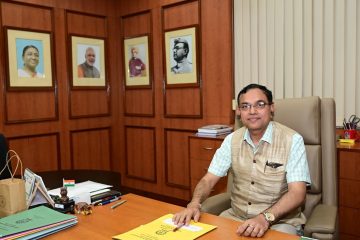The term “Blockchain” has now become a buzzword, and several myths, propagandas, misconceptions, and fairy tales have been around throughout the past ten years concerning this new yet powerful technology. Let me start by highlighting the real power of this technology and its plausible use cases.
Blockchain ≠ Bitcoin!
If we consider Bitcoin and other cryptocurrencies as the “Electric bulbs,” Blockchain is the “Electricity.” Let me try to explain it with an example.
Trade financing during international trades involves prolonged negotiations and risks with complex legal obligations. Consequently, such tradings are facilitated by the banks as the intermediaries, who provide the financing for the trade deals and guarantee the payments after verification of supply documents. While this involves a network of banks, individual banks have their policies, and they are the competitors in the market. How can we create a digitized platform where the banks can cooperate in a reliable, transparent, and secured manner for trade financing?
A global database with all transaction information can solve this, but then, who will maintain it? Individual banks can’t, as they are the competitors; a third-party cloud will involve cost and has privacy concerns. Blockchain solves this; you do not need a global physical database to store and update all the transactions; instead, each bank holds its own copy of the database and performs operations individually and independently. Blockchain helps maintain the consistency, correctness, and security of the data in that database and provides the competing enterprises the power to cooperate to deliver fast, transparent, and reliable services to their customers. You may check We.Trade (https://we-trade.com/), which is a blockchain-based network of 16 banks across 15 countries, for supporting trade-financing.
Blockchain in India:
Very recently (January 2021), the Ministry of Electronics and Information Technology (MeiTY), Government of India has published the first draft of the “National Strategy on Blockchain.” The document highlights 17 potential applications that are of national interest; these include property record management, digital certificate management, eVoting, pharmaceutical supply chain, farm infrastructure, power distribution, identity management, electronic health record management, public service delivery, etc.
Interestingly, if we look into these applications, inherently, they are multifaceted, having several stakeholders with different governance and policy implications. There are national and state-controlled organizations for many of these services, and bringing them on a common digitized platform is the real challenge. Blockchain can undoubtedly improve the service provisioning performance of these sectors and bring transparency to the entire process. However, this multifaceted and diverse governance is both our strength and our weakness. While we have a vast scope of getting the technology-in-the-loop, the diversity itself slows down its adoption.
Blockchain@SMRL, IIT Kharagpur
At the Systems and Mobile Research Lab (SMRL) within the Department of Computer Science and Engineering, IIT Kharagpur, one of our primary research focuses is on supporting interoperability among multiple blockchain networks, like Hyperledger, Corda, Ripple, Quorum, OpenChain, Steller, etc., which are being adopted by various enterprises globally. These individual networks typically work in silos, but, many a time, there is a strong need for interoperation among them. For example, in my earlier example of trade financing, the seller can use TradeLens (https://www.tradelens.com/), a blockchain network for trade logistics, to deliver the Goods to the buyer. In this case, the system becomes more performant if we can readily transfer the logistics details and its billing from the TradeLens network to the We.Trade network. However, freely moving sensitive information from one network to another breaks the basic principles of transparency, security, and reliability, as supported by Blockchain. At our lab, we are working towards developing such interoperation solutions in collaboration with IBM Research. We shall present this work at IEEE International Conference on Blockchain and Cryptocurrency (IEEE ICBC) which will be held virtually from 3-6 May, 2021.
We are also working on developing blockchain-based applications in our lab. One of our recently accepted papers at IEEE INFOCOM 2021 talks about the design and prototype implementation of a multi-cloud federated architecture where different small and medium cloud service providers can use a blockchain-based open marketplace to trade cloud resources. The architecture is similar to popular cloud federation platforms like OnApp Federation (https://onapp.com/onapp-federation/), but it does not use intermediaries or cloud brokers.
Given the widespread applicability of blockchains, we should now focus on bringing blockchain-related courses into the mainstream education of Computer Science and other departments. Earlier, I had offered an NPTEL MOOC course jointly with Dr. Praveen Jayachandran, IBM IRL, on “Blockchains: Architecture, Design, and Use Cases.” We are now working on designing a similar course as a postgraduate elective for IIT Kharagpur students. There is also scope for developing a micro-specialization on Blockchain and its use cases by combining this technology’s interdisciplinary aspects from various fronts.
The Future
The enterprises have slowly started adopting blockchain-based solutions to develop reliable, cost-effective, and secure solutions for providing fast, transparent, and efficient services to their customers. The Government has started developing the policies for its adoption in the Indian markets. With this backdrop, I see the massive potential of this technology in the coming future. However, I do not believe that Blockchain can solve all our problems; we need to find out the right use-case with the right technology at the right place. The Indian academia should play a significant role here, while the industries and the Government focus on system development, adoption, and policy decisions.

The article was also published on ABP Education
Dr. Sandip Chakraborty is currently an Assistant Professor in the Department of Computer Science and Engineering at IIT Kharagpur, where he leads multiple high-valued research projects, sponsored by the GoI and various industries. He is working as an Area Editor of Elsevier Ad Hoc Networks journal. He received various awards including INAE Young Engineers’ Award 2019. His research interests are Computer Systems, Computer-Human Interactions, and Distributed Systems. He did his Ph.D. from IIT Guwahati in 2014.



